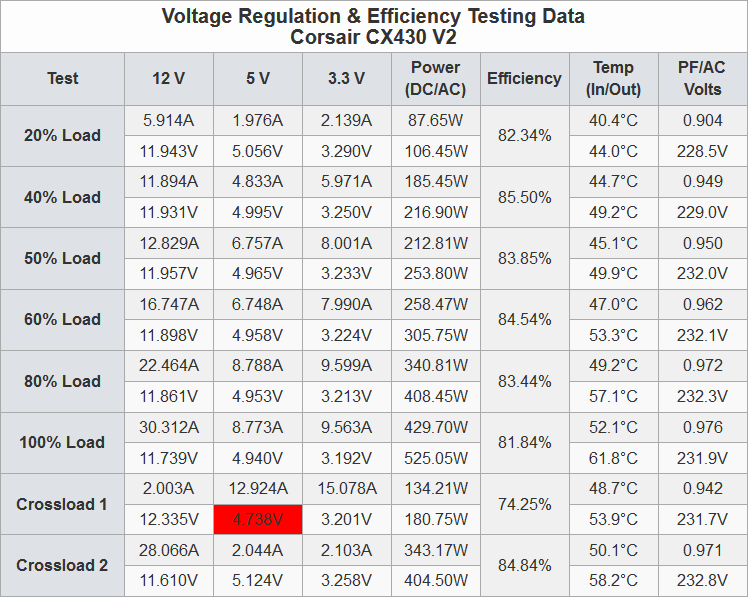Tetrium wrote:A friend of mine had a more modern PSU die on him when he used it to power on one of his Athlon XP systems and it destroyed it's 5v rail, even though it had listed something like 25A on the 5v line. It was not some El Cheapo PSU, it should've been decent, was around 600W and had powered his A64x2 6000+ without any issues ...l
There are two potential problems when using modern '+12V heavy' PSUs to power old '+5V heavy' comps, like Athlon XP without 'P4' connector.
· +5V rail rating. If PSU has say one 15A rectifier on +5V (15x5= 75W) and comp demands 100W from +5V rail at full steam, BANG.
. Voltage regulation. Most budget PSUs are group-regulated (as opposed to independent regulation). Long story short, this means they can't handle well a combination of heavy load on the +5V rail and light load on the +12V rail:

http://www.techpowerup.com/reviews/Corsair/CX430_V2/5.html
^ In the crossload test CL1, a combination of light draw from +12V (only 2A or 24W), but heavy draw from +5V (13A or 75W) and from 3.3V (15A or 50W), the group-regulated Corsair CX430 V2 can't cope and +5V rail voltage drops below ATX specification (red rectangle). Ouch.
Now that's an extreme torture test from a PSU reviewer, not likely to be reproduced on a real world comp, but the potential for problems is there, check +5V voltage with a multimeter to be safe.
There are things that draw extra from +12V and will help on voltage regulation when modern '+12V heavy' group regulated PSUs are powering old '+5V heavy' comps:
- Fans, HDDs, optical drives, some GPUs.
- Dummy loads, like 12V 21W car bulbs, or heavy duty resistors (this trick is as old as the PC itself 🤣 ).
